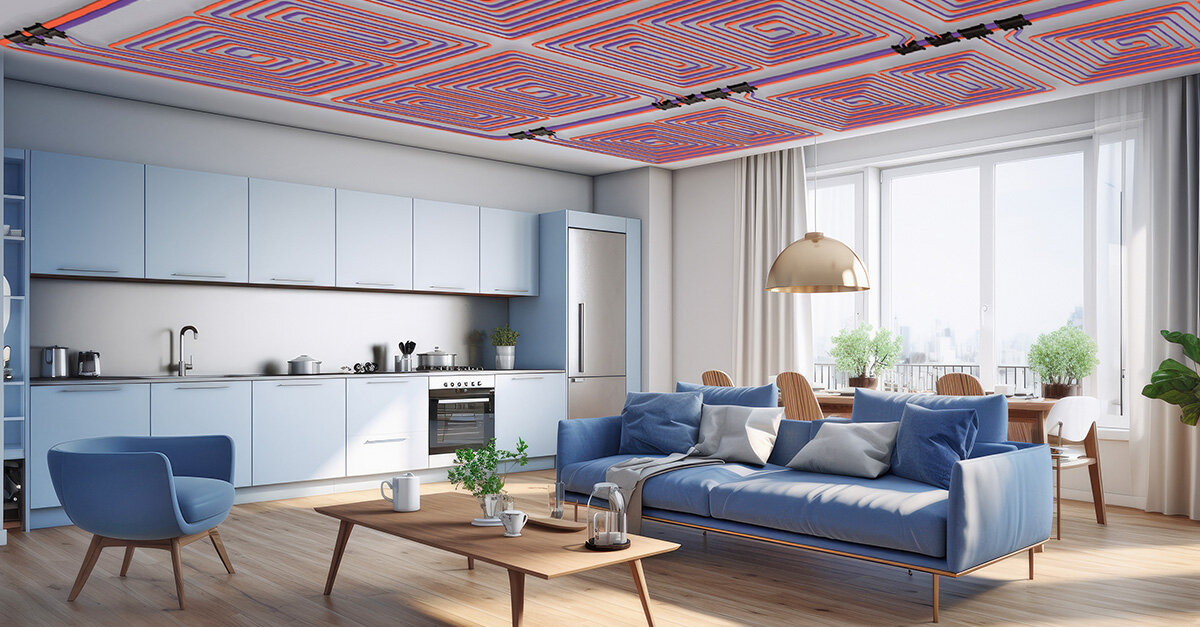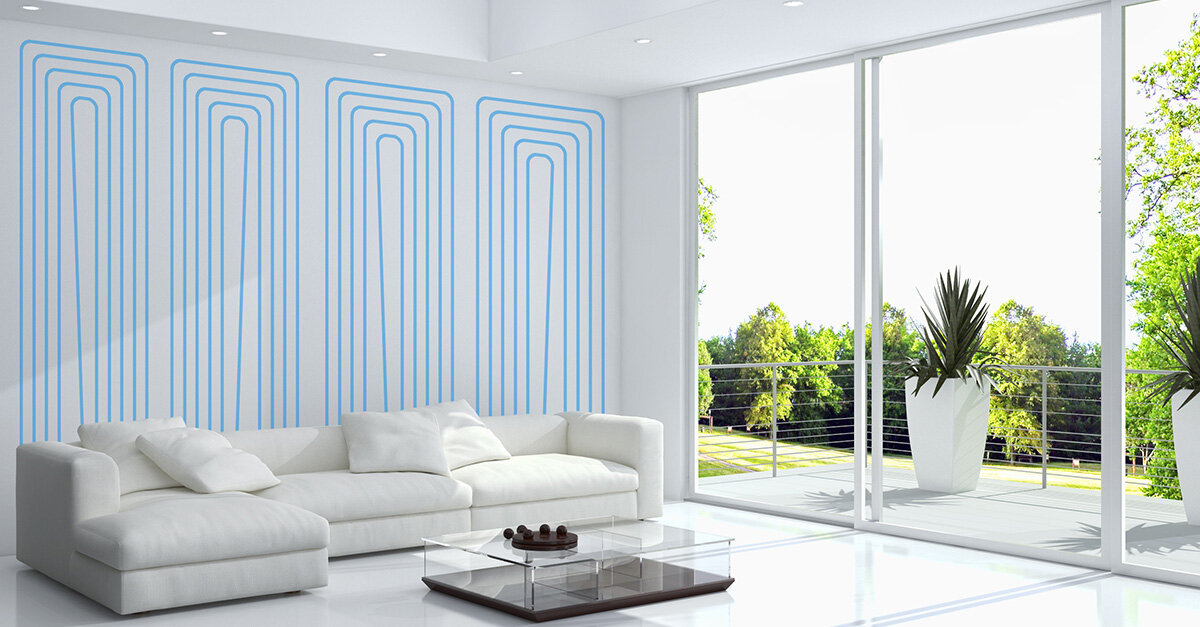Comparing Radiant Heating Systems: Floor, Wall, or Ceiling — Which One to Choose?
Radiant heating systems are among the most appreciated technologies in climate control, thanks to their ability to combine energy efficiency, thermal comfort, and design flexibility.
Operating at low temperatures and compatible with renewable energy sources and high-efficiency generators, these systems offer a concrete solution to modern sustainability and indoor comfort needs.
There are three main types of radiant systems: floor, wall, and ceiling.
Each installation method affects the system’s performance, thermal inertia, and architectural integration.
Floor Heating Systems
Floor systems are the most widely used. They provide uniform comfort and good thermal inertia, although they have slower response times and require more complex installation.
Advantages:
Even heat distribution from the bottom up
High thermal inertia
Completely invisible and silent
No air movement, reducing dust circulation
Disadvantages:
Slower to reach desired comfort levels due to high thermal inertia
Invasive installation, often requiring removal of existing flooring
Best suited for:
New residential constructions or full-scale renovations

Ceiling Radiant Systems: Fast, Space-Saving, and Ideal for Renovations
In contrast to other radiant solutions, ceiling-mounted systems stand out for their quick activation and ease of integration in renovated spaces, although they offer a less direct sensation of warmth on the body.
Advantages:
Rapid comfort delivery
No floor or wall space required
Ideal for cooling in areas with limited surface availability
Disadvantages:
Less direct heat perception
Require regular, suspended ceilings for installation
Higher installation costs compared to other systems
Best suited for:
Offices, schools, or commercial spaces with cooling needs. Also recommended for historic building renovations or where existing premium flooring must be preserved.

Wall Heating Panels: A Versatile Intermediate Solution
Wall-mounted radiant panels offer a practical middle ground, especially in partial renovations or in specific rooms such as bathrooms and bedrooms.
Advantages:
High versatility in retrofit projects
Balanced performance between comfort and response time
Excellent perceived comfort, as heat radiates directly to the body
Disadvantages:
Limited available surface area (walls must be free of furniture)
Risk of damage when drilling
Lower cooling capacity compared to ceiling system
Best suited for:
Bathrooms and bedrooms where floor or ceiling installation is not easily accessible

Still Unsure?
Contact us to learn more and find the radiant heating solution that best fits your needs!




